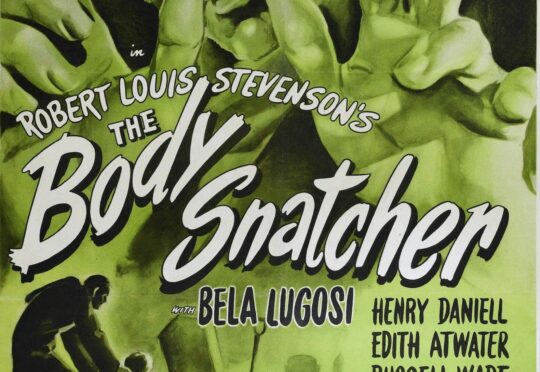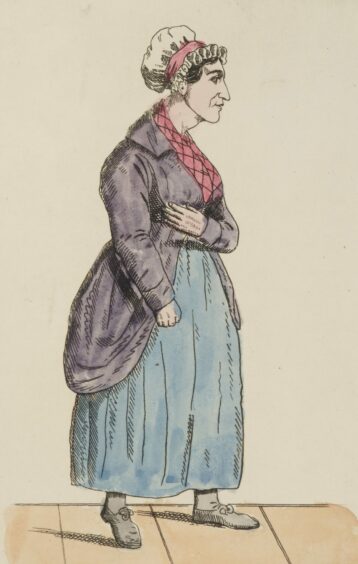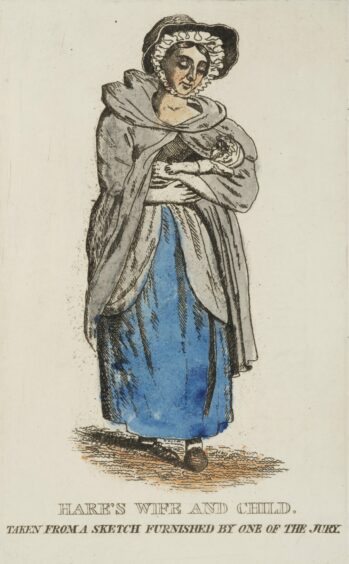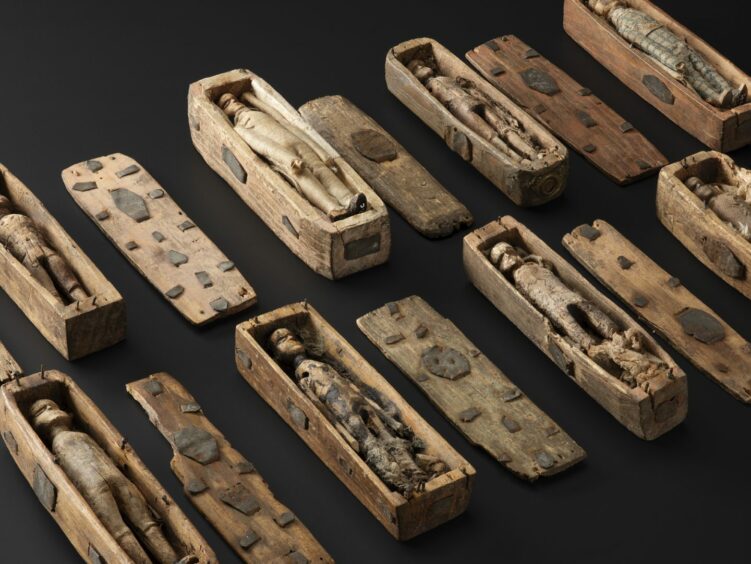
He was and remains one of Scotland’s most infamous murderers, but when William Burke stood in the dock on Christmas Eve 1828, his equally notorious partner-in-crime William Hare wasn’t beside him but his partner in life, Helen McDougal, was.
At the time, McDougal, and Hare’s wife, Margaret Laird, were as well known as their men but somewhere between then and now both women’s names somehow fell away from the narrative, leaving only Burke and Hare bloodily immortalised in history.
A new exhibition at the National Museum of Scotland, Anatomy: A Matter Of Death And Life, threads Edinburgh’s invaluable role in the advancement of medical, especially anatomical, knowledge, and ends on the crescendo of the murders committed by Burke and Hare.
The pair – murderers not grave robbers or body snatchers – preyed on the city’s poorest and most vulnerable to sell their bodies to Dr Robert Knox, who desperately needed a supply of cadavers to instruct his medical students. Yet the pair were very likely to have been helped in their nefarious business by their partners, although their level of complicity remains hotly debated.
Dr Tacye Phillipson is the senior curator of science at the National Museum of Scotland, and has lived and breathed the Burke and Hare scandal while putting together the exhibition.
She said: “It is one of the reasons I prefer to call them the West Port Murders, rather than just naming it after the men involved. When McDougal was tried alongside Burke, a question that was discussed a lot at the trial was, ‘What is the boundary of awareness for becoming an accessory to a crime?’
“There was little actual evidence of the crimes, so there was very, very little chance of unravelling the extent of the murders or of achieving a conviction without a confession. McDougal was ultimately found Not Proven.”
The exhibition shows how the Edinburgh of the early 19th Century very quickly became the perfect scene for such killings, as by the late 1820s the Scottish Enlightenment had reached its zenith.
The city was well known as a place of advanced knowledge and learning – although this world was reserved almost exclusively to wealthy men from respected families. For the poorer classes, Edinburgh was a site of great poverty and neglect, and in hindsight it almost seems as if it were a matter of time before both worlds collided in such grisly fashion.
Burke, Hare, McDougal and Laird were not exactly natural born killers. Burke, Hare and Laird were Irish immigrants, while McDougal hailed from a working-class area in or around Falkirk.
Laird was a widow who ran a slum boarding house in the West Port area, and married Hare, who was one of her lodgers. The couple met Burke and McDougal when the latter pair rented a room in Hare’s boarding house, having moved from Falkirk to Edinburgh in search of better fortunes.
Burke and McDougal were not married, as Burke had left a wife and family back home in Ireland. By the time of their trial in late 1828, McDougal said she had been with Burke for around 10 years.
The couples seemed to chase honest livings until an old pensioner named Donald died in the Hare lodging house. Hare was annoyed because Donald owed him £4, but had died before he could withdraw his quarterly pension funds to pay him with.
Hare decided to take Donald’s body and sell it to a doctor as he knew cadavers were in high demand, and so he and Burke took the body to Edinburgh University, asked around, and were pointed towards Dr Knox at 10 Surgeons’ Square as a potential buyer.
Dr Knox bought the body for £7.10/- without question, which amazed the pair. “The comparable income they got from that body was between £10,000 and £15,000 in today’s money. Their own monthly incomes were very, very low. It was months of income for them, and it caused them considerable temptation,” explained Phillipson.
It was a temptation that the pair found they could not resist for very long, and by the time they were caught on November 1, 1828, they had killed 16 people in order to sell their bodies on to Knox.
Their final victim was discovered, stuffed under a bed, by Burke and McDougal’s fellow lodgers, a young married couple called James and Ann Gray. On their way out of the building to report their discovery to the police, they were stopped first by McDougal and then by Laird, who both tried to bribe and convince the couple not to go to the police. It was clear then that both women were complicit but the question remains about how much they really knew about their partner’s crimes.
Phillipson said: “Did they know their husbands were murderers, or did they think they were just grave robbers? Burke and Hare are still often described as grave robbers, and we’re jumping up and down saying, ‘No – they were murderers!’ But that is what their excuse was, as they needed some excuse for why they had so much money, and they needed some excuse for why they were relatively openly selling bodies.”
While both Burke and Hare gave confessions, only Burke’s remains, and it has been suggested that he shaded what he said so that it reflected badly on Hare and Laird in revenge for Hare testifying against him in exchange for immunity, as well as to protect McDougal.
In it, Burke attests that Laird would lure victims off the streets and back to her boarding house for the men to kill, and that she demanded £1 payment from the sale price for the use of her room. There was also potential talk from the Hares to Burke that McDougal should be killed too as she was Scottish and so could not be trusted.
“Helen McDougal doesn’t come out of it as very intelligent. When she was found not proven, she tried to go home, where she met a mob that unsurprisingly did not wish her to go home. There are conflicting reports on her fate, and whether she had the wit to change her name and disappear, or was killed by a mob, we don’t know. Margaret Laird was found by a mob in Glasgow and had to be put on a boat to Ireland with her young baby and without her belongings.”
On why only Burke and Hare are remembered, Phillipson argued that despite their crimes, McDougal and Laird could not match their men in infamy, and so were eventually forgotten. She explained: “Burke gets a lot of attention because he was hanged. So the term ‘Burking’ somebody, as in to suffocate someone, was because he was hanged – it’s not called ‘Haring’ somebody, after all.
“And for Hare, the unfairness of his situation, in that he is the only mass murderer known in the UK to be released without trial, is shocking and gets you remembered. But also that – men do tend to be the ones who are remembered.
“It is much shorter to say ‘Burke and Hare’, than it is to say, ‘Burke and Hare and Hare and McDougal’.”
Were 17 tiny coffins left to remember the murder victims?
One afternoon in 1836, a group of boys headed to Arthur’s Seat to hunt for rabbits. When their dog disappeared down a small cleft, they discovered something macabre.
In the little cave were 17 miniature coffins, eight piled on eight with one on top. When the boys brought the coffins back, they roused fascination. Studies of the surviving coffins show they could not have been in the ground for longer than six years, and with the West Port killings occurring less than 10 years before their discovery, some scholars have speculated that someone was trying to symbolically lay Burke and Hare’s victims to rest.
The victims of the West Port Murders were little thought of despite their killings causing such a furore and in his confession Burke seemed to not know, or could not remember, the names of some of his victims. The West Port gang targeted vagrants or vulnerable people on the edges of society who would not be noticed as missing.
Dr Tacye Phillipson explained: “The interest then was in the fact that they were selling the bodies for dissection, rather than any personal interest in the people who were murdered. William Burke was only found guilty for one murder, he wasn’t tried for the rest, because one murder equals one hanging – why do you need more?”
The coffins, however, offer some hope, however small, that someone remembered, and genuinely cared, about the victims who lost their lives to the West Port gang’s greed.
George Dalgleish, keeper of Scottish history and archaeology at the museum, said: “Why somebody might go to the trouble of surrogate burial for these people was that at the time the religious views were such that the notion of there being no body to bury meant that there was a possibility of not being resurrected in the second coming. It’s hard for us to understand today, but that had a strong emotional pull. Tying all of that together, the West Port Murders angle is definitely the most convincing theory.”
Eight of the surviving 15 miniature coffins are on display at the Anatomy: A Matter Of Death And Life exhibition.

Enjoy the convenience of having The Sunday Post delivered as a digital ePaper straight to your smartphone, tablet or computer.
Subscribe for only £5.49 a month and enjoy all the benefits of the printed paper as a digital replica.
Subscribe © SYSTEM
© SYSTEM © SYSTEM
© SYSTEM